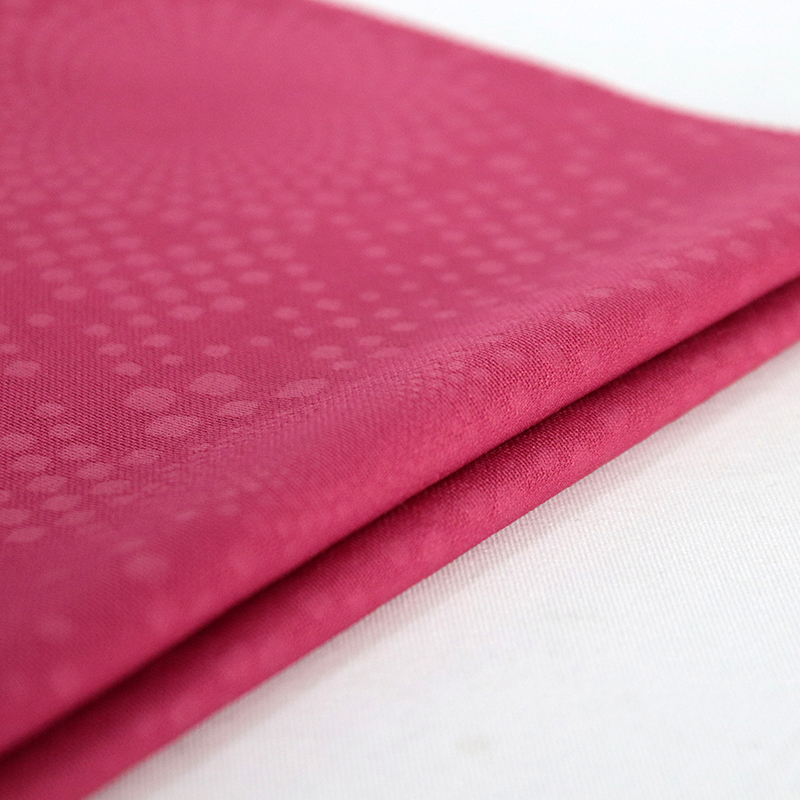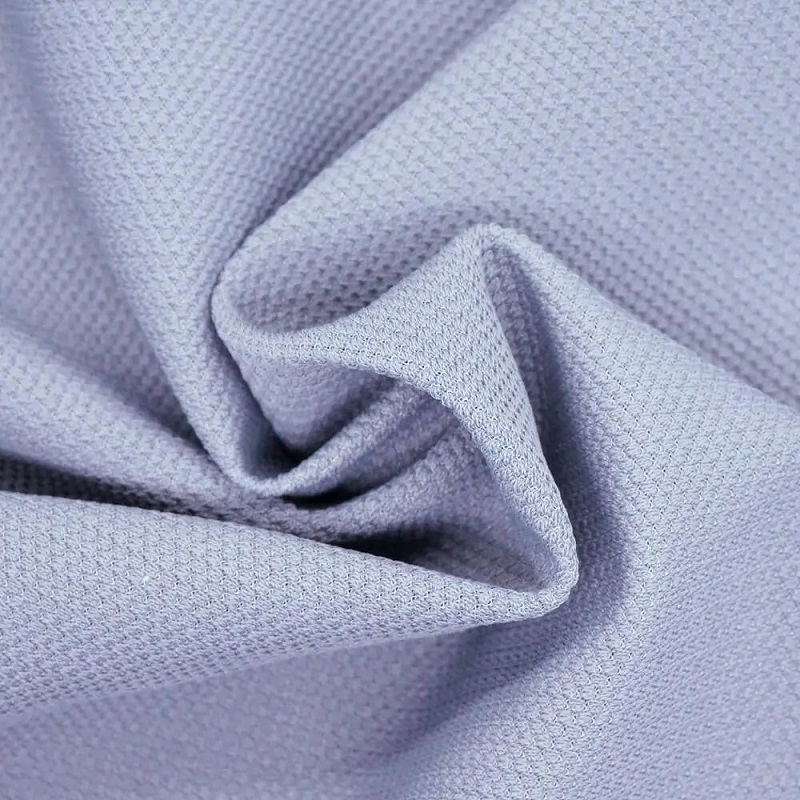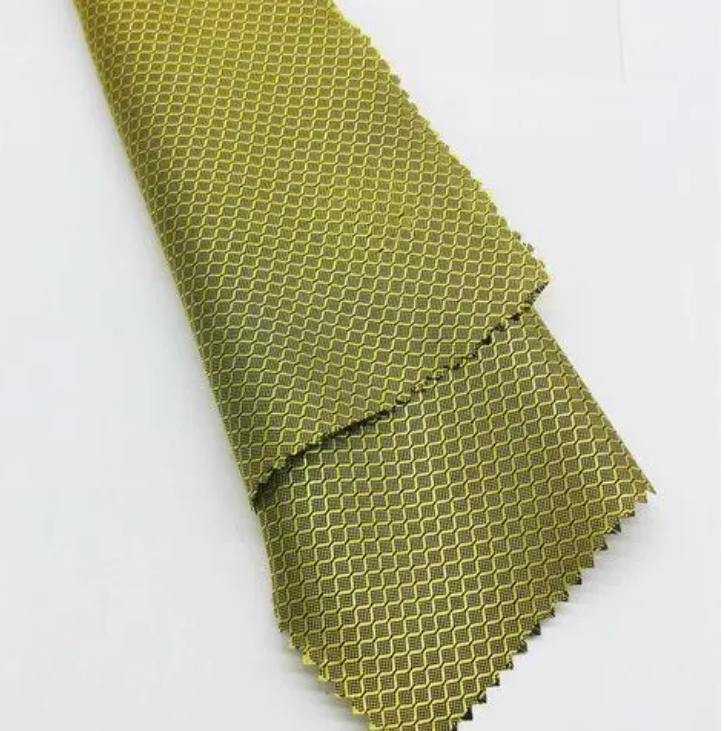Warp knitted fabrics are divided into two categories: Raschel fabric and tricot fabric.
Raschel fabric is a type of textile that is primarily characterized by its large flower shape, coarse cloth surface, and the presence of many holes. It is commonly used as a decorative fabric due to its unique and eye-catching design. Here are some key features and uses of Raschel fabric:
Features of Raschel Fabric:
- Large Flower Shape: Raschel fabric often features intricate floral designs that are created directly on the fabric during the manufacturing process. The flower shapes can vary in size and complexity, adding a visually appealing element to the fabric.
- Coarse Cloth Surface: Raschel fabric typically has a rough or coarse texture on its surface. This texture adds depth and dimension to the fabric, enhancing its visual appeal and giving it a distinct tactile quality.
- Many Holes: Raschel fabric is characterized by the presence of numerous holes or openings in the fabric structure. These holes can be arranged in various patterns and sizes, contributing to the fabric’s unique aesthetic.
Uses of Raschel Fabric:
- Decorative Fabric: Raschel fabric is primarily used as a decorative fabric due to its intricate floral patterns, coarse texture, and the presence of holes. It is often employed in home decor applications such as curtains, drapes, tablecloths, and upholstery. The distinctive design of Raschel fabric adds a touch of elegance and uniqueness to interior spaces.
- Apparel Embellishments: Raschel fabric can also be used as an embellishment material in the fashion industry. It is commonly employed for creating decorative trims, appliques, and overlays on garments. The large flower shapes and unique texture of Raschel fabric make it an ideal choice for adding visual interest and texture to clothing.
- Crafts and Accessories: Raschel fabric can be utilized in various craft projects and accessories. It can be cut into desired shapes and used for creating decorative elements in crafts such as scrapbooking, card making, and textile art. Additionally, Raschel fabric can be incorporated into accessories like bags, headbands, and hair accessories to add a distinctive touch.
- Event Decor: Due to its decorative nature, Raschel fabric is often used in event decor and theme-based decorations. It can be employed as table runners, chair sashes, backdrops, or as a material for creating decorative elements like bows, rosettes, and event signage.
Raschel fabric’s unique characteristics make it a versatile and visually appealing textile for decorative purposes. Its large flower shapes, coarse cloth surface, and presence of holes contribute to its distinct aesthetic appeal. Whether used in home decor, fashion embellishments, crafts, or event decor, Raschel fabric adds an element of charm and creativity to various applications.
Tricot fabric is a type of textile that is characterized by its fine cloth surface, limited designs and colors, and high production output. It is primarily used for covering fabric and printing fabric applications. Here are some key features and uses of tricot fabric:
Features of Tricot Fabric:
- Fine Cloth Surface: Tricot fabric has a smooth and fine surface texture. It is created using a warp knitting technique, which results in a tightly knit fabric with a uniform appearance. The fine cloth surface of tricot fabric gives it a polished and refined look.
- Limited Designs and Colors: Tricot fabric typically comes in a limited range of designs and colors. The focus of tricot production is on high output and efficiency, rather than intricate patterns or vibrant colors. It is often produced in basic solid colors or simple prints.
- High Production Output: Tricot fabric is known for its high production output. The warp knitting process used to manufacture tricot fabric allows for rapid production, making it an efficient choice for large-scale manufacturing.
Uses of Tricot Fabric:
- Covering Fabric: Tricot fabric is commonly used as a covering fabric in various applications. It can be used to cover foam padding in upholstery, mattresses, and automotive interiors. The smooth and neat surface of tricot fabric provides a comfortable and visually appealing layer for the underlying materials.
- Printing Fabric: Tricot fabric is also utilized as a printing fabric. Its fine surface is suitable for printing intricate designs and patterns. It is often used in the production of sublimation prints, where the ink is transferred onto the fabric using heat. Tricot fabric’s high production output makes it a cost-effective choice for printing applications.
- Apparel: While tricot fabric is not as commonly used for apparel as weft knitted fabrics, it can still be found in certain clothing items. It is often used for linings, lingerie, swimwear, and sportswear. Tricot fabric’s good dimensional stability, neat appearance, low fraying, and good air permeability make it suitable for these applications.
- Industrial Applications: Tricot fabric also finds use in various industrial applications. It can be used for filters, conveyor belts, geotextiles, and other technical textiles where its smooth surface and high production output are advantageous.
Tricot fabric is primarily made from synthetic fiber filaments such as polyester, nylon, vinylon, and polypropylene. However, it can also be made from natural fibers like cotton, wool, silk, and linen, as well as blends of natural and synthetic yarns. While tricot fabric offers good dimensional stability, neat appearance, and air permeability, it may not possess the same level of transverse extension, elasticity, and softness as weft knitted fabrics.
Overall, tricot fabric is valued for its fine cloth surface, high production output, and suitability for covering and printing applications. Its efficiency and versatility make it a popular choice in industries where speed and cost-effectiveness are essential.
Warp knitted fabrics mainly include the following types:
- Polyester warp knitted fabric: the cloth surface is flat and straight, the color is bright, and there are thick and thin types. Thin type is mainly used as shirt and skirt fabric; The medium and thick type can be used for men’s and women’s clothing, windbreaker, coat, suit, pants and other fabrics;
- Warp knitted pile fabric: it is mainly used for winter men’s and women’s coats, windcoats, tops, trousers and other fabrics. The fabric has good drapability, is easy to wash, dry and do not iron. However, static electricity accumulates in use and is easy to absorb dust;
- Warp knitted mesh fabric: wearing mesh fabric is light and thin, with good elasticity and air permeability, smooth and soft feel. It is mainly used as the fabric of men’s and women’s shirts in summer;
- Warp knitted velvet fabric: the surface is densely fluffy, thick, plump, soft, elastic, and warm. It is mainly used as winter clothing and children’s clothing fabric;
- Warp knitted terry fabric: this kind of fabric has a full and thick feel, firm and thick cloth body, good elasticity, moisture absorption and warmth retention, stable Terry structure and good wearing performance. It is mainly used for sports clothes, lapel T-shirts, pajamas, children’s clothing and other fabrics.




